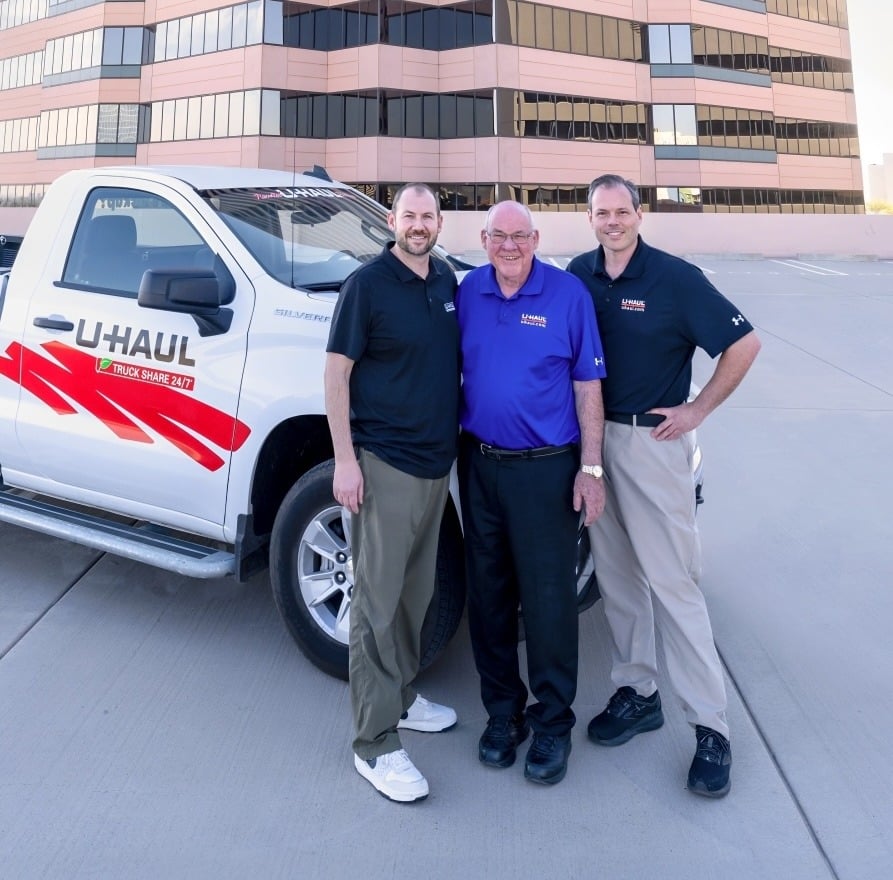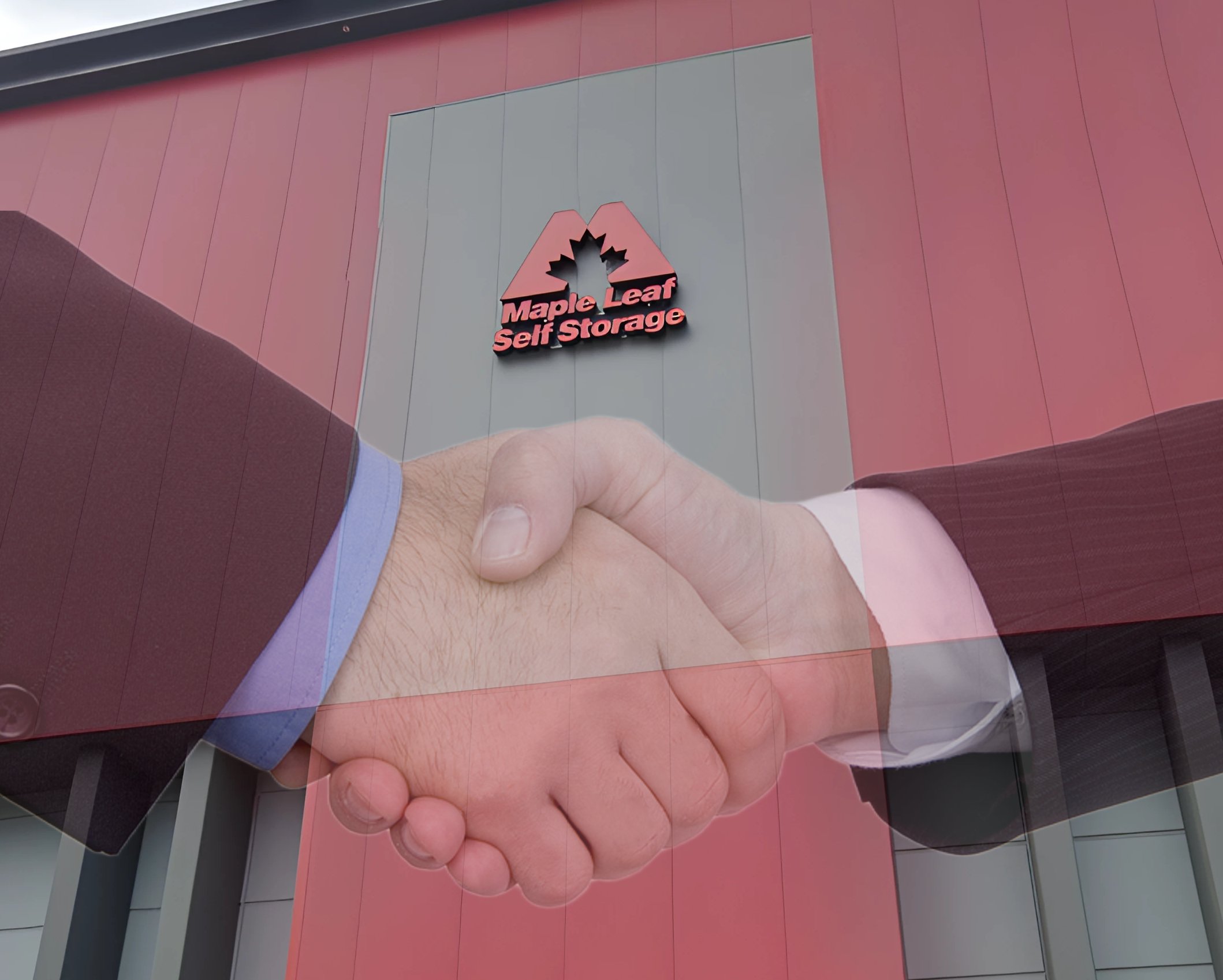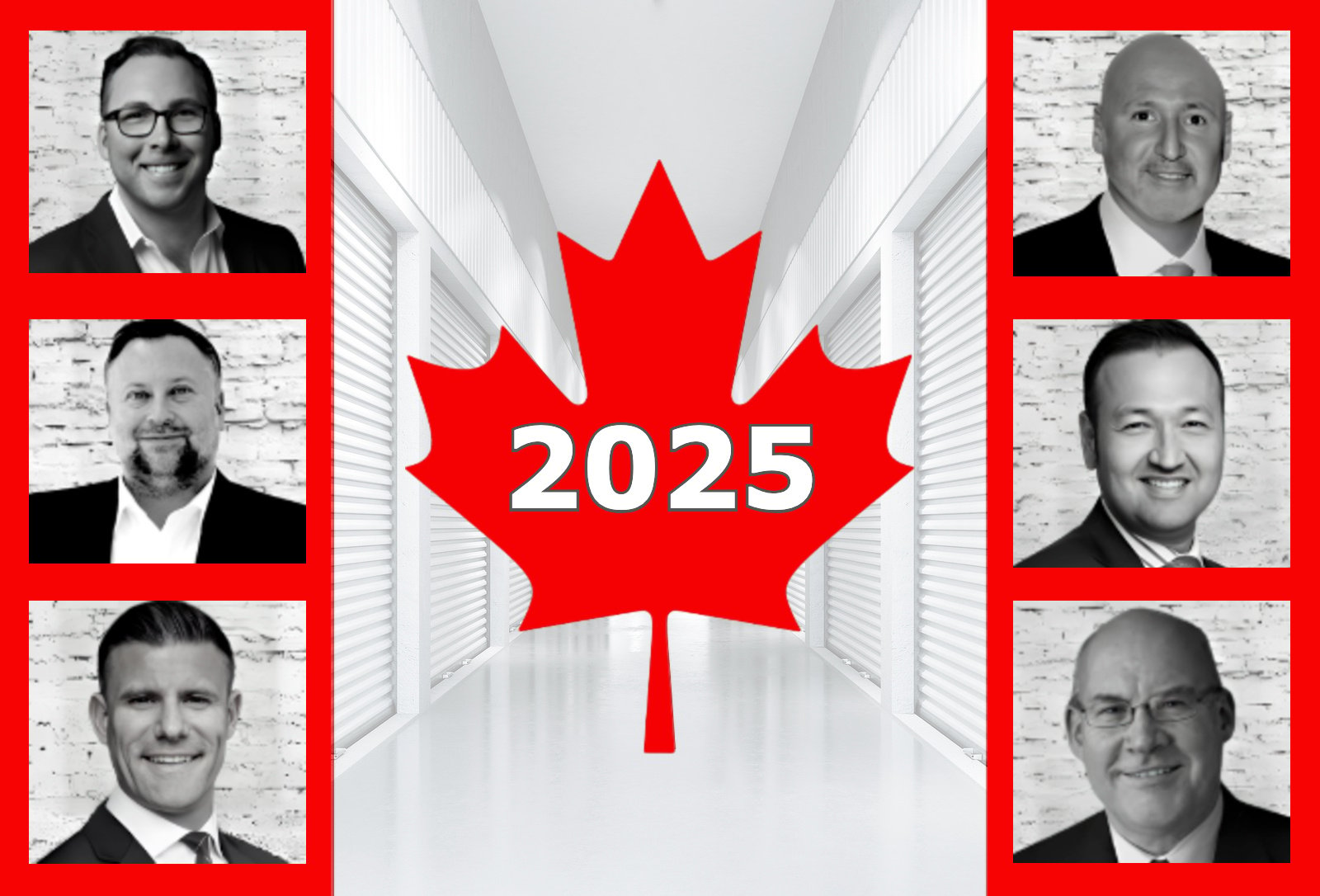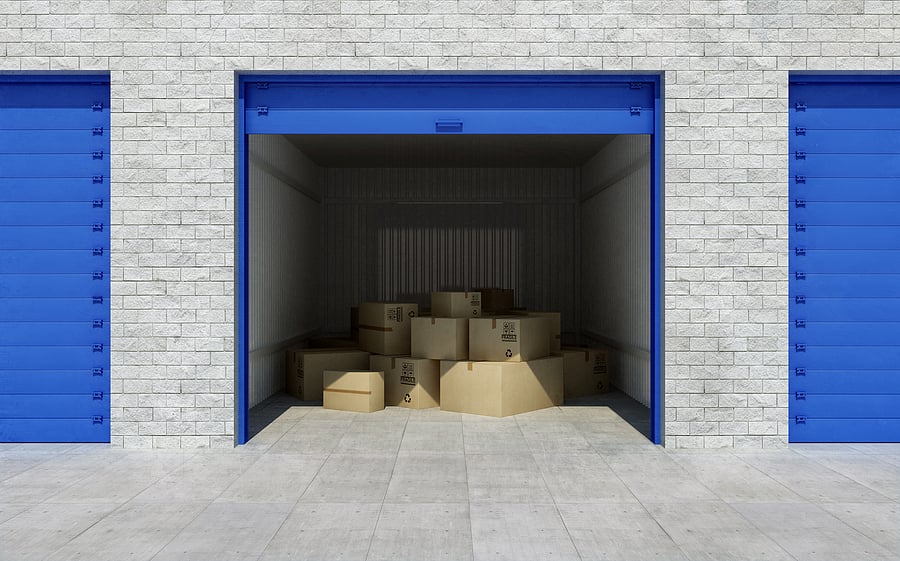Knowing The Competition
Research And Evaluation To Stay At The Top
Back when self-storage was a relatively new concept, depending on the market, owners and operators may not have had to worry about many competitors. However, those days are long gone. Many modern markets are saturated with self-storage facilities and owners and managers must stay on top of what their competition is doing in order to provide the best product available and have an idea of pricing and availability.
There are several quotes floating around about the competition, says Paul Darden, president and owner of the Paul Darden Company in Dallas, Texas. One is, “The biggest competition we have in the industry is the dumpster.”
That may be true, but there may not be much you can do about competing with a dumpster (except maybe not provide them for use on your property).
Another he attributes to Mike Burnham with StorageMart, which applies to what you can actually do to make yourself more competitive by knowing your competition. “I’d rather have a smart competitor than a stupid one.”
Knowing the competition has much to do with pricing, but it is also evaluating the competition’s property as well as their staff.
Identifying The Competition
The first thing you want to do, say the experts, is identify your competing market radius. Generally, in a suburban market, this will be within three to five miles of your store. “Most people think of it in a three- to five-mile radius,” says Maurice Pogoda, president of Pogoda Companies in Farmington Hills, Mich. “That’s pretty typical of suburban areas and some light urban areas, but if you’re in a very dense urban area like New York City, it may be your competition is within a half-mile radius. On the other hand, a rural location may take it out 15 miles.”
Sometimes Donald Jones, owner of Donald Jones Consulting & Service in Keller, Texas, doesn’t just evaluate the competition within a certain mile radius, he looks at the entire region. “In very competitive markets such as San Antonio, you just can’t look one to three miles,” he says. “I take the market as a whole and then look at different parts of town.”
Jones adds that this gives him a better overall perspective of the market and what’s happening. In a recent instance of evaluating the entire market, he found that some competitors were giving the impression that their prices were being lowered during a lease-up. However, he says, based on his research, that wasn’t the case. “Rates are typically controlled in the submarket, but in this instance, rates were being lowered all over town by one of our competitors,” says Jones. “It wasn’t due to a lease-up, but the rates had actually lowered due to the overall market.”
Once you’ve identified your radius based on the type of region where you’re located, you must then identify the storage facilities that best match what you offer. “If you’re a brand-new climate-control facility, your like-kind competition is not going to be a first-generation drive-up facility,” says M. Anne Ballard, president of marketing, training, and developmental services for Universal Storage Group in Atlanta, Ga. Similarly, if you’re a self-storage facility with no RV and boat storage, you’re not going to want to compare your facility to an RV and boat storage facility.
If you’re brand new to the market and are doing initial research for the market comparison portion of your proforma, or just doing an initial comparison after you open, you can begin by looking on Google Earth to get a feel for like-kind competition in your area. “We start with Google Earth and work our way down to real earth,” says James Hanrahan, managing partner of acquisitions with Store Here Self Storage in Orange, Calif.
You will also need to evaluate the website. In addition to checking out the web pricing, which is typically lower than what a customer is quoted when they walk into the store, you should make a note of what amenities they list and whether customers can rent and make payments online. One important aspect some people overlook is actually evaluating the website itself. Experts say you can tell a lot about the professionalism of a facility by the effort they put into building their website.
After checking out the competition online, most facilities follow up with a phone call. Unless a manager has already established rapport with the competing property, you might choose to do a mystery shop, posing as a customer. “If the manager is new or this is their first contact, we’ll typically do a mystery shop,” says Ballard.
Jones shops all of his stores’ competition as mystery shops, while his managers are upfront about who they represent. Jones adds you must be careful, though, if you’re truly wanting a mystery shop experience (either on the phone or in person) not to tip your hand. “I’ve watched owners who pretend to be customers and they’re terrible at it,” says Jones. “You can’t ask developer type questions or use industry speak.”
When placing a call, you’re seeking subtle information such as what type of information the manager trying to get from you. “I’ve seen so many managers get people on the phone and not even ask the person’s name, what they need storage for, or any contact information so they can follow up; they’re just price quoting,” says Ballard.
You also need to evaluate the manager’s friendliness and willingness to help solve a customer’s storage issues, as well as price, which may or may not be the same as the website.
Keep in mind that Google Earth and the website make a great starting point, but you and/or your managers must do a physical visit to obtain all the information available in order to get a complete picture of your competition. “There’s no substitute for visiting the store, walking it, and meeting with the manager,” says Pogoda. “The internet won’t tell you how well it’s located, even when using Google Maps. You have to see what surrounds it, the state of the area around it.”
“The phone doesn’t ring as much as it used to, so location and the appearance of the property is still one of the biggest things to draw in business, so this is important,” says Ann Parham, CEO of Joshua Management and the Parham Group of Companies in San Antonio, Texas. “People might drive by a facility for years, and when they need storage, they will look you up based on how well you maintained the property.”
When you’re evaluating the property either from Google Earth or when you reach the point of visiting on real earth, you’re looking for several different things. “Is it well-maintained? Do the roofs leak? You get a sense of the property and what problems it might have,” says Pogoda, adding that you’re also checking out the office to see if it’s modern or stuck in another decade, checking out retail space, evaluating the inventory, and taking notice of from where the manager is greeting. “Is it a stand behind desk or a tiny little desk; does it give off a welcoming feel?” says Pogoda.
“Our core values are clean, safe, and friendly, so that’s what we’re mainly looking for in the competition,” says Ben Vestal, CEO of Argus Self Storage Advisors in Denver, Colo. “That’s the first thing we evaluate, and then we do 14 to 15 other points including the traffic patterns at the facility, the unit mix, occupancy, and rates.”
Most companies use a checklist or grading sheet. Ballard shares the company’s Annual Competitive Survey Report, which the managers are required to complete each year. In it, the company is looking for:
- Accessibility
- Curb appeal
- Accessibility of units
- General upkeep
- Office appeal
- Signage
- Resident manager
- Gate security
- Individual gate code
- Security features, including cameras, fencing, lighting, unit lights
- Model available
- Climate control
- Trucks for rent (or available to tenants)
- Retail supplies for sale and inventory
- Concessions offered
- Full price sheet attached along with photos of the property
It may be tricky to get the total number of units and the occupancy, but, surprisingly, you may be able to get this information directly from the manager. Unless you’re doing a mystery shop for some reason, all the experts agree that it’s best to actually develop a relationship with the competing manager, which will benefit both parties in the long run.
“It helps to have a good working relationship with the competition,” says Ballard. “If your competition is out of a certain size, they will then send you referrals.” Ballard adds that it works both ways; they send customers over to friendly competitors as well. “You can’t just pick up the phone and tell them you’re sending over a customer if you’ve never met the manager,” says Ballard. “Our ultimate goal is to be the hero for the customer and make the call in front of them.”
Ballard notes that while you might lose that customer in the present, if the customer needs storage again, they will remember that gesture and come back. “Customers always want to rent from the experts, someone who has done the analysis on what’s available in the marketplace,” says Ballard.
Jones agrees about keeping the competition friendly and even instructs his managers to go with their complete rate sheet, introduce themselves, and tell the competing manager they just wanted to stop in to meet them. “Don’t forget to ask, ‘Is there anything you’d be willing to share with us?’” advises Jones.
One thing managers are not allowed to do anymore is price fixing in a given market. “They have to be very cognizant not to do that,” says Darden.
What To Do With All That Information
Ballard’s managers first create two documents based on the competitive analysis. The first is a chart for the office, showing all the information. Each year, the managers are also required to create or update a Market Survey Book that contains all the information, along with photos of the competing property.
This book is not only used internally, but they don’t hesitate to show it to customers. “If a potential customer comes in and says they want to check out the competition, we show them the book,” says Ballard, who adds this just builds upon the facility’s willingness to help, as well as to show they’re the experts in the market.
Jones also looks at how they can make their facility better than the competition by doing things such as updating or freshening up the office. “That might be something as simple as a fresh coat of paint, or it might mean gutting the entire office,” says Jones. “It will cost money and time, but it might make us more competitive.”
Other important things to look at when comparing the competition to your property is the landscaping, signage, and cleanliness of your property. Jones reminds operators not to forget to evaluate your website next to the competition; make sure your website is state of the art and mobile accessible.
However, the most important item, says the experts, is how well your manager is performing next to the competition. “There’s one thing that makes your property totally unique to the competition and that’s your manager,” says Jones. “You have to ask yourself, ‘Is mine better?’ You may have to respond to the information that’s been collected by improving your manager.”
Parham agrees that the manager is the most important aspect of your property. “I’ve had my managers come back and tell me, ‘We have to get that manager,” Pahram says. “When your manager is telling you that, you know they recognize a good manager and they know what to do.”
Adjusting Prices Using The Knowledge
Of course, the final aspect of knowing the competition is pricing. You must look at the competition’s internet rate, phone rate, and walk-in rate to get a feel for what they can get for their units.
Most facilities may not do a full market analysis on a monthly basis, but the successful facilities are continually looking at pricing, if not daily using comparative services online, they are doing it at least monthly.
Adjusting pricing depends on many factors, not just what is happening overall in the market, but what is happening in the market with regards to each unit size. If a manager won’t share occupancy by unit size with you, the experts all agree you can generally get a ballpark feel for it by comparing the prices. If they’re high on any given unit size, they’re likely at or near occupancy. If there’s specials or concessions on certain sizes, chances are likely they have several to rent.
Most importantly to each company, however, is what’s happening at your facility with overall occupancy and based on each unit size.
Hanrahan, who’s company uses technology to do price adjustments, doesn’t rely just on the technology. “It really depends on the unit type and the property,” says Hanrahan. “We don’t like being over 92 percent occupied; we want units to rent at full price and we don’t like to be fully occupied.”
One thing the comparative analysis typically proves to Pogoda is that their properties are above any of the competition in the market. It gives him the confidence to set his prices higher than the competition. “We’re not afraid to be higher if we’re already for certain sizes,” says Pogoda. “We know we can sell them at much higher prices.”
Stay In The Know
Successful facilities typically do pricing analysis on the competition daily or at least monthly to evaluate where their facility stands in the marketplace. A full market analysis is typically done at least annually, with managers staying in contact with competitors on a regular basis in order to build a rapport and referral program.
Full knowledge of what your competition is doing is necessary in order for your facility to provide the best service and product.
Kerri Fivecoat-Campbell is a freelance journalist based in the Ozark Mountains. She is a regular contributor to MiniCo’s publications. Her business articles have also appeared in Entrepreneur, Aol.com, MSN.com, and The Kansas City Star.
More Content
Popular Posts
The self storage industry is in a precarious...
Joe Shoen, CEO of U-Haul, has had enough.
Like its name implies, Surprise, Ariz., a...
Joe Shoen has had enough.
In a record-breaking deal finalized May 12,...
Senate Bill 709 (SB709) has many in the...
Donald Trump has just reclaimed the White...
The question of “abandonment” of stored...
Self-storage operators wear a lot of hats....
In 1992, Clinton strategist James Carville...
Recent Posts
When Neville Kennard left for a work trip to...
Self-storage software is no longer...
The self-storage industry continues to...
Fires in California. Tornadoes in Kansas....
From policy pivots in Ottawa to tariff...
Self-storage operators have struggled to...
Their signature red coats may draw attention...
Nailing down Josh and Melissa Huff for an...



















